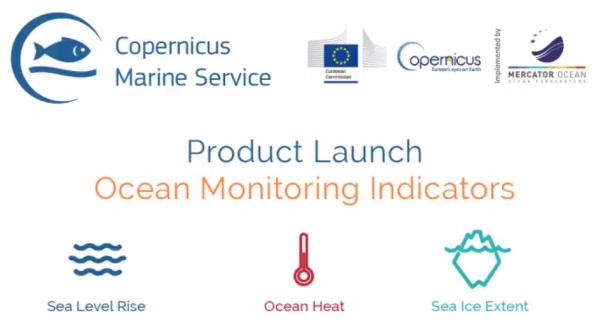The Copernicus Marine Service has released a new ocean information product. The Ocean Monitoring Indicators (OMIs) are free downloadable datasets which cover the past 25 years of key variables used in monitoring oceanic trends in line with climate change, including ocean warming, sea level rise and melting of sea ice. This free and open ocean information allows users to track the vital health signs of the ocean over the past quarter of a century.
The Copernicus Marine Service has released a new ocean information product. The Ocean Monitoring Indicators (OMIs) are free downloadable datasets which cover the past 25 years of key variables used in monitoring oceanic trends in line with climate change, including ocean warming, sea level rise and melting of sea ice. This free and open ocean information allows users to track the vital health signs of the ocean over the past quarter of a century.
The data is based on historical satellite and in situ observations of the ocean and sea ice as well as numerical ocean models. The products are free and available on the Copernicus Marine Service website as digital files. They include observations starting in 1993, hindcast and forecast data of global and regional ocean heat content, the global mean and regional sea level, and the Antarctic and Arctic sea ice extent (the Arctic time series is from 1979 onwards).
The OMI products were developed through a long process of scientific analysis and validation, with the consensus of around 100 Copernicus Marine Service scientific experts after their review. The OMIs were created through a strong collaboration with other Copernicus services such as the Copernicus Climate Change Service (C3S). They identified sea level rise, ocean heat and sea ice extent as the most important symptoms of our warming planet, and important trends to track in monitoring climate change. The products provide valuable information not only for scientists, but also decision-makers, environmental agencies, and may be of interest to the general public.

